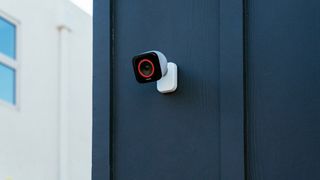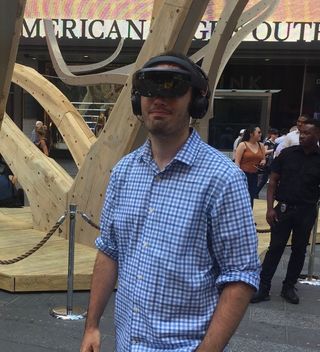Best Home Security Systems with Cameras 2022

To judge the best home security systems with cameras, we considered which ones had the full range of indoor, outdoor and doorbell cams, had useful features like motion tracking, and how much those cameras, video storage and video monitoring will cost. The Vivint Home Security System checks every camera box we could think of for reliable home surveillance, but for those who'd prefer bargain-priced, DIY camera security, we've laid out all of the best options on the market today.

Best Overall Home Security System with Cameras: Vivint Home Security System
Vivint Home Security System
Truly innovative cameras
It's no surprise that the best professionally installed home security system overall delivers great camera specs. With Vivint, your pro-installed cams will record 20–90 second motion-triggered clips stored in the cloud, or you can pay for a 1TB DVR that enables continuous recording for up to four cameras.
The Vivint Ping Camera is expensive for an indoor camera, but it justifies the price with genuinely useful and unique security features. For one, while most cameras support two-way audio initiated in the security app, only the Ping lets people in the room press a button on the camera to contact the admin via the app — helpful if someone at home need to contact you quickly for an emergency. You can also create custom rule triggers that control your smart devices automatically in response to detected motion. It has an impressive 155-degree field of view (FOV) to capture a whole room in 1080p.
The Doorbell Camera Pro offers an outstanding 180-degree horizontal and vertical FOV in 1080p that transmits over dual-band Wi-Fi, with up to 10X digital zoom or 3X optical zoom. You can hardwire it or run it off battery, and it can detect people or packages but ignore other objects. The outdoor cams, meanwhile, have a 140-degree FOV with 55 feet of IR night vision coverage and a loud, 85dB speaker for alerting people they've been spotted.
To take advantage of these features, you'll need to have Vivint install them for you, which means optimal placement and proper wiring but also either paying upfront for a network of expensive cameras and sensors or accepting a five-year loan to offset the costs. On top of that, you'll pay somewhere in the $50/month range for professional video monitoring, far steeper than most DIY security companies.

Best for IFTTT Automations and Pro Monitoring: Blue by ADT Security System
Blue by ADT Security System
Automate your DIY security
ADT may be the most expensive professionally installed security system for equipment and monthly monitoring fees, but its DIY offshoot Blue by ADT offers a more palatable price point. Its somewhat pricey cameras stand out from the crowd thanks to its facial recognition software: you can upload up to eight facial photos, then receive personalized notifications letting you know if one of your pre-approved visitors is at the door.
Blue by ADT's indoor, outdoor and doorbellcameras all sell for $200 — rather expensive compared to other indoor cams but it's industry-standard for outdoor and doorbell cams. The indoor and outdoor models have 1080p resolution, record in 15 FPS, have a 130-degree FOV with custom motion detection zones, up to 10 minutes of triggered recorded video with a cloud subscription, two LEDs for night vision and, best of all, 128GB microSD slots for local storage. Its doorbell hits a 180-degree FOV, can trackt up to 10 feet away, and has person detection mode so you don't get constant alerts from cars. Plus, the Indoor camera can register the sound of smoke or CO alarms and will alert you when they go off.
Blue by ADT's camera specs are average for home security systems, but the company stands out thanks to its simple DIY installation, its access to nationwide ADT video monitoring centers at a mere $20/month instead of the $50+ you pay with ADT proper, and impressive smart home integration with Z-Wave Plus, IFTTT, Alexa, Google Assistant, Hue, Nest, Sonos, and others through its smart home hub with keypad.
Whether Blue by ADT's smart home integration will fit your needs is worth considering. You can set up if-this, then-that statements that trigger with detected motion or through Alexa or Google Assistant commands, something many security systems can't do. For example, you can set IFTTT to turn on your Hue lights when an alartm sounds. On the other hand, you can't have your camera feeds appear on an Echo Show or Google Home display like some security systems allow. Plus, while other companies sell their own smart locks, thermostats, and other smart accessories, you'll have to pick and choose third-party Z-Wave devices that you can control, but may not integrate into the ADT app features like a first-party device would.

Best DIY Home Security System with Cameras: Frontpoint DIY Home Security System
Frontpoint DIY Home Security System
One-stop security shop
For a DIY home security system that sells a complete catalog of first-party devices instead of relying on third-party devices to fill the gaps, Frontpoint delivers everything you could need at fair prices. That catalog includes an affordable indoor cam to cheaply cover an entire home, a doorbell cam that will require a little DIY wiring, and an outdoor cam built to handle cold weather. Plus, its elite combination camera and speaker lets you make Bluetooth calls, has a 180-degree FOV and can pan, tilt, and zoom to track down intruders.
The elite cam aside, Frontpoint's cameras are budget-priced and their specs reflect that, with standard FOVs, 1080p resolution, and night Vvsion that will work efficiently but won't impress you compared to security companies that sell their cameras as standalones, like Eufy or Ring. However, Frontpoint lets you buy tech that many other companies don't offer: glassbreak detection, garage door tilt sensors, CO and flood sensors, smart locks, and light bulbs.
We covered Frontpoint in greater depth in our best home security systems list, but suffice to say that the security company has impressed us. Its main unfortunate drawback is that professional video monitoring will cost you $50/month, putting it in the same high-end category as Vivint and ADT.

Best for Cheap Video Monitoring and Camera Variety: Ring Alarm Security System
Ring Alarm Security System
Versatile camera power and placement
Most security companies consider video monitoring to be a premium service, charging somewhere in the $500/year range and bundling it with other useful perks like geofencing and home automation. Ring Protect Plus, on the other hand, costs a mere $100/year to monitor all of your Ring cameras and other sensors, or merely $30/year for 60-day video storage and snapshots if you choose to self-monitor. Compared to other services, Ring's savings will only add up over time.
Ring isn't just the best budget home security system for its cheap monthly fees. It creates excellent cameras that compete against the best standalone security cams on the market, and are often designed for any environment. The Ring Stick Up Cam can be powered with a swappable battery pack, power outlet, or solar panel, so you can buy different models based on whether an outlet or router is nearby but still get the same video performance.
An Amazon-acquired company, Ring will particularly benefit owners of its smart devices. You can use Alexa commands to pull up live footage of any Ring camera feed on your Echo Show or Fire tablet. Amazon has also given police departments warrantless access to most Ring feeds upon request, which some will see as a privacy violation rather than a safety bonus.
While Ring has a variety of Works With Ring devices, the company doesn't make its devices accessible through Google Home or HomeKit, and Ring Alarm doesn't work with IFTTT, so you won't be able to have smart home devices respond to detected camera motion.

Best for Self-Monitoring and Affordable Cameras: Wyze Sense Home Security System
Wyze Sense Home Security System
Build a secure smart home
Assuming you'd rather protect yourself with cheap but reliable cameras than pay a premium for pro monitoring, look no further than Wyze. We were impressed with the Wyze Cam Outdoor in our review, thanks to its local storage, free 14-day cloud storage, and solid specs for just $60, which helps you build a surveillance system of multiple cams for the same price as just one outdoor cam with other systems. As for inside your home, the current Wyze Cam and Wyze Cam Pan are two of our favorite indoor cameras, while the upcoming Wyze Cam v3 brings some stunningly good specs like outdoor weather resistance, 130-degree field of view, color night vision, 20 FPS recording, and the same cloud and local storage options for just $20.
Along with its bargain-priced and reliable cams, Wyze also sells contact and motion sensors that will alert you if someone breaks into your home. Moreover, it fully supports IFTTT for home automation, meaning you can activate your smart bulbs or devices plugged into smart plugs whenever your sensors or cams detect an intruder. Most companies lock home automation behind a subscription, if it offers the feature at all. Add in Alexa and Google Assistant support, plus its own smart lock and smart thermostat, and you have an excellent system for building a smart home.
As a side-note, Wyze has announced its plans to offer professional monitoring through Noonlight in early 2021. We're not sure how this will factor in yet, but for now, it's a reliable self-monitored option that, theoretically, doesn't require any monthly fees. You'll probably want to pay $15/year per camera for Cam Plus, which gives your cameras person detection and will add smart features like facial recognition and package detection sometime in the future.
Wyze may not be the perfect fit for everyone. Wyze impresses with its cheap cams but doesn't sell any "premium" cameras with improved specs and features. It's also missing some mainstays of more official security systems: cellular backup, a dedicated siren, a home keypad or touchscreen, or a key fob.
Bottom line
Why you can trust Android Central
To decide which camera-enabled home security system fits your needs, start with your budget, the size of your home, and whether your home is owned or rented. If, for example, you're in a non-first floor apartment where your front door is the only point of access, you can invest in a cheap standalone cam or video doorbell and be relatively secure. The point of a system is for cameras to work in conjunction with sensors and a professional monitoring team for backup, which is why you usually pay more for each connected smart home cam despite middling specs. Homeowners usually buy four by default — one doorbell, two outdoors for the front/side and back, and one indoor — but larger homes may need more.
We chose Vivint's Home Security System as the best home security system with cameras, in part because Vivint provides remote or in-person consultations and advise you on how many cams and sensors you need. You'll never need to fret about skimping and leaving a blind spot. It then offers 24/7 surveillance with the optional DVR, while with other systems you'll sometimes have fixed-duration video clips cut off before the actual crime is committed. And unique features like package recognition and camera emergency call buttons are particularly ingenious. However, if you rent your home, Vivint's permanent installation may not be your best bet, as you'll need to pay Vivint to uninstall and reinstall your cameras in your new home.
Credits — The team that worked on this guide

Michael Hicks got his tech start in 2016, covering emerging tech like VR and self-driving cars before expanding to all things tech. When he's not gaming or reading SFF novels, he writes freelance for Android Central on everything from laptops to soundbars, home security to fitness watches.
Be an expert in 5 minutes
Get the latest news from Android Central, your trusted companion in the world of Android

Michael is Android Central's resident expert on fitness tech and wearables, with an enthusiast's love of VR tech on the side. After years freelancing for Techradar, Wareable, Windows Central, Digital Trends, and other sites on a variety of tech topics, AC has given him the chance to really dive into the topics he's passionate about. He's also a semi-reformed Apple-to-Android user who loves D&D, Star Wars, and Lord of the Rings.
For wearables, Michael has tested dozens of smartwatches from Garmin, Fitbit, Samsung, Apple, COROS, Polar, Amazfit, and other brands, and will always focus on recommending the best product over the best brand. He's also completed marathons like NYC, SF, Marine Corps, Big Sur, and California International — though he's still trying to break that 4-hour barrier.
